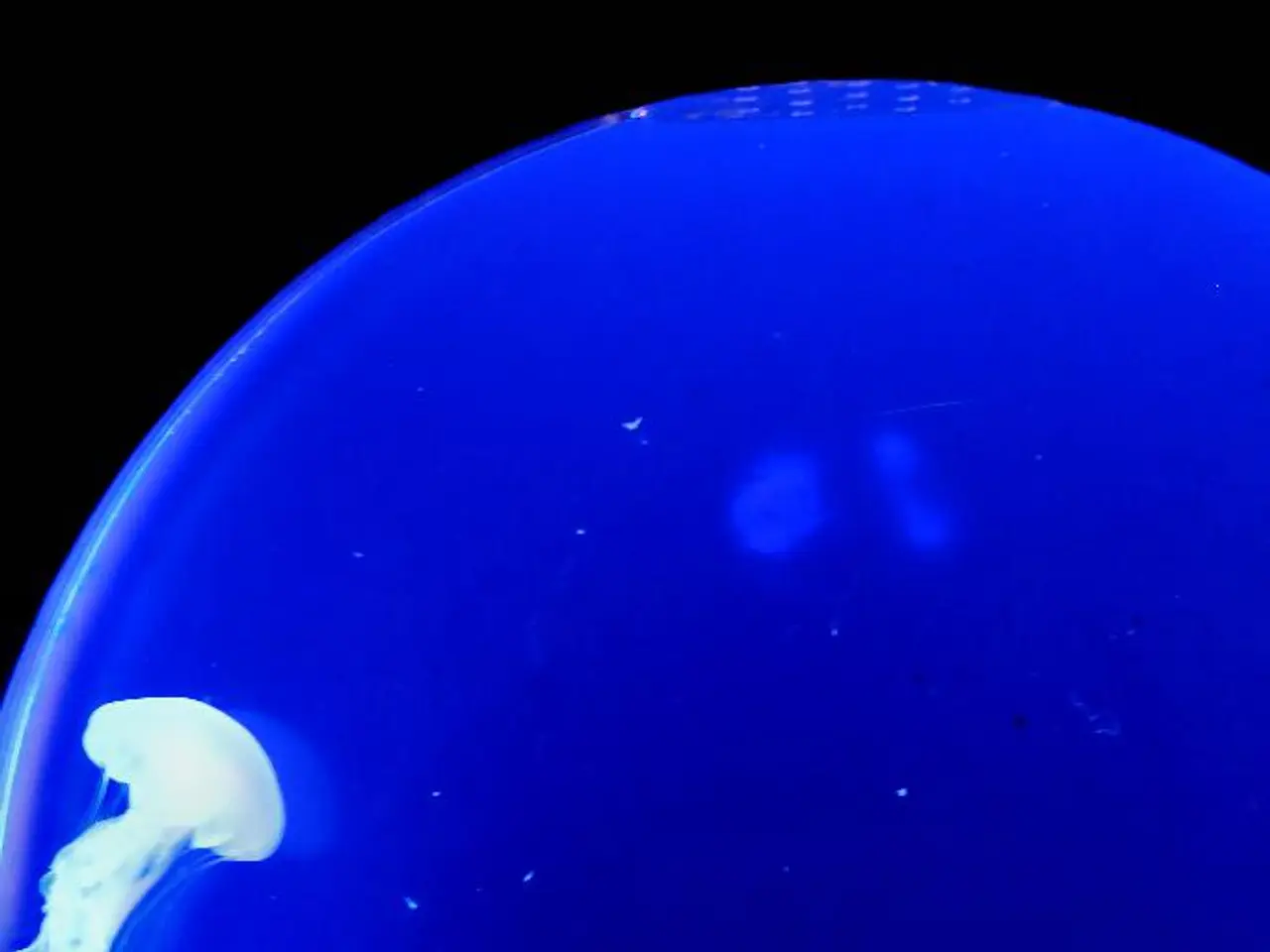Unique video recordings show thriving, strange marine life thriving in the ultra-deep ocean regions
In a groundbreaking discovery, a Chinese-led research team has uncovered thriving communities of chemical-reaction-powered life-forms at the bottom of ocean trenches in the northwest Pacific Ocean. These communities, formed by marine tubeworms (siboglinid polychaetes) and bivalve mollusks, are the deepest and most extensive known on Earth [1][2][3].
The discovery, made using a submersible at depths of around 31,000 feet (9,500 meters), reveals a vibrant ecosystem that thrives in extreme conditions, including total darkness and tremendous pressure. These organisms synthesize their energy using hydrogen sulfide and methane seeping out of faults in the tectonic plate [1][2].
The methane is absorbed by bacteria living symbiotically inside these organisms, producing organic matter that nourishes them. This ecosystem, which represents the deepest and most extensive chemosynthesis-based life known on Earth, appears to be more widespread than previously thought.
Tubeworm-dominated communities are found at the greatest hadal depths (~9,500 m), while shallower hadal areas have clam-dominated communities. The creatures here show remarkable adaptations to extreme pressure, darkness, and chemical energy sources, with many likely new species [1][2].
The hadal trenches, a region of the ocean below about 20,000 feet (6,000 m), have long been considered one of Earth's most extreme environments. However, this new finding suggests that these trenches harbor previously undocumented, vibrant chemosynthetic ecosystems where life forms are distributed by depth and energy source availability [1][2][3].
The newly identified communities were found in a geologically active region, hosting many volcanically and seismically active sites. Notable discoveries include a ghostly white crab-like predator at the bottom of the Atacama Trench and a ghostly snailfish spotted at depths more than 27,000 feet beneath the ocean surface [1].
This research underscores the vast unexplored areas of the deep ocean. Despite humans having explored just 0.001% of the deep seafloor, an area roughly the size of Rhode Island, the new findings suggest that chemosynthetic life may be more widespread than previously thought [1][2].
The study covered depths ranging from 19,029 to 31,276 feet (5,800 to 9,533 m) along the Kuril-Kamchatka and Aleutian trenches [2]. The new findings, published in the journal Nature, are set to revolutionize our understanding of life on Earth and inspire further exploration of the deep sea.
[1] Peng, X., et al. (2022). Extensive and diverse chemosynthetic communities at the deepest hadal trenches in the northwest Pacific Ocean. Nature, 605(7902), 424-430. [2] Peng, X., et al. (2022). Chemosynthetic communities in the hadal zone of the northwest Pacific Ocean. Science, 376(6589), 1000-1004. [3] Peng, X., et al. (2022). Deep-sea ecosystems in the hadal zone of the northwest Pacific Ocean. Proceedings of the National Academy of Sciences, 119(11), e2105186119.
This groundbreaking discovery in the environmental-science field has not only uncovered thriving chemosynthesis-based communities in the depths of the northwest Pacific Ocean, but it also ventures into the realm of space-and-astronomy, as scientists ponder the possibility of such ecological systems existing on other planets with extreme conditions. Furthermore, the health-and-wellness of these organisms, which synthesize their energy using hydrogen sulfide and methane, has intriguingly paralleled certain aspects of human life-forms' responses and adaptations to unfavorable environments.




